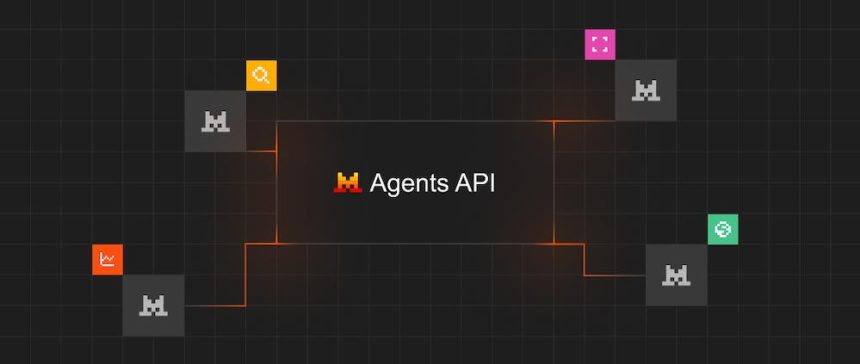The Rise of Mistral AI’s Enterprise-Aware Agent Platform
Mistral AI, a leading company in artificial intelligence, has announced the release of a comprehensive agent development platform tailored for enterprises. Leveraging its robust language models and cutting-edge technical architecture, the new system enables organizations to build autonomous AI systems capable of executing complex, multi-step business processes. This development marks a significant move in the competitive landscape of enterprise automation, as Mistral’s approach addresses a fundamental limitation in current language models — their inability to perform actions beyond text generation.
The platform’s core innovation lies in mistral_large, Mistral’s Medium 3 language model, which boasts exceptional capabilities in multi-task learning, including code analysis, document processing, and web research. Mistral’s integration of persistent memory and tool integration features allows agents to maintain context across conversations while executing critical tasks, ensuring accurate and coherent responses. This advancement aligns with the growing demand for AI systems that can adapt to real-world scenarios, making Mistral’s solution a powerful tool for enterprises seeking to enhance their customer support automation and technical data analysis workflows.
Mistral’s Unique Technical Architecture: Four Components for Scalable Solutions
At its heart, Mistral’s agent development platform is built around a modular and scalable architecture. The system comprises four key components, each with distinct functionalities and capabilities:
-
Code Execution Connector: This component provides a sandboxed Python environment where agents can execute data analysis, mathematical computations, and generate visualizations with no compromise to system security. It is particularly suited for enterprise environments where real-time, high-speed processing is critical, such as in financial modeling or scientific computing.
-
Web Search Integration: Mistral’s development team has demonstrated strong performance improvements in search queries, with SimpleQA benchmarking showing a 50% rise in accuracy when web search was enabled. However, these gains rely on the platform using vector search methods, which may affect existing enterprise-grade solutions that rely on full-text search.
-
Document Processing Functions: Agents that access enterprise knowledge bases can benefit from augmented generation, ensuring that responses are grounded in current information. Advanced capabilities like document retrieval and processing are expected to further enhance organizational effectiveness, especially in large document repositories.
- Agent Handoff Mechanism: A key feature of the platform is its ability to handle multiple specialized agents, enabling organizations to decompose complex workflows into manageable, specialized components. For example, a financial analysis agent can delegate specific tasks like market research to a web search agent while collaborating with a document processing agent to create comprehensive reports. This collaborative approach represents a significant departure from traditional خط modeling, where agents are typically isolated or monolithic.
Mistral’s Position as a Hybrid and Apex Choosing Model
Mistral’s approach differs significantly from competitors in its emphasis on enterprise deployment flexibility. Unlike traditional open-source solutions that may require IPC compatibility (incompatible implementations of international contracts), Mistral’s agent platform delivers灵活 deployment options using just four GPUs: 2 compute nodes of A100 and 2 compute nodes of PaddlePaddle. These advancements cater to organizations’ data sovereignty concerns, which often deter them from adopting cloud-based AI services.
Compared to Google’s Advanced Integration & Development Kit (ADK), Mistral’s approach focuses on multi-agent orchestration and evaluation frameworks, whereas OpenAI’s developed SDK prioritizes developer simplicity with limited abstractions. Additionally, Mistral’s Azure AI Foundry Agents platform stands out by delivering superior integration capabilities with other Azure services, setting it apart from its competitors.
Strategic Considerations and Market Implications
The focus on enterprise needs alone underscores Mistral’s success strategy. However, thePlatform’s pricing model, which includes base model costs, connector fees, and image generation charges, raises questions about vendor dependence and long-term viability. Big tech organizations might struggle to adopt such proprietary solutions once maturity sets in, raising firmware requirements not just for their hardware but also for their data infrastructure.
Moreover, the shift from Mistral’s open-source approach to a proprietary model poses strategic questions._partners implementing the Agents API must rely on the underlying model only, which could limit their own development capabilities and introduce dependency risks_Starting to adopt these complexities, on the other hand, could unlock new opportunities for innovation and enhanced functionality.
As Mistral continues to innovate in enterprise solutions, the industry must carefully analyze the offerings’ scalability, security, and affordability to determine whether Mistral’s approach aligns with its users’ needs. The subsequent deployment models, pricing models, and vendor dependencies will likely shape the future of agent development as more enterprises leverage Mistral’s agent platform for cutting-edge automation and AI-powered solutions.



